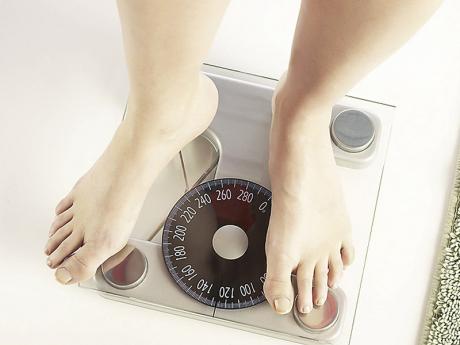Calorie counting made easy
Charlyn Fargo, Contributor
Want an easy way to track those calories you are eating and see how you're doing on your personal goal? The U.S. Department of Agriculture has added a new feature to its "SuperTracker" that allows users to set personal calorie goals.
"With one in three Americans overweight or obese, resources like SuperTracker play a critical role in helping people to develop good health and nutrition habits," said Kevin Concannon, Agriculture Under Secretary for Food, Nutrition and Consumer Services. "This update allows individuals to set goals tailored to their specific needs and improve their overall health and well-being."
Built and maintained by USDA's Center for Nutrition Policy and Promotion (CNPP), SuperTracker is free to use and available at www.choosemyplate.gov. As originally designed, SuperTracker assigned users a calorie level based on information entered in their user profile such as age, height, weight and physical activity level. The new feature allows users to tailor their diet and exercise regimens to fit calorie target recommendations suggested by their physician. To access the new personal calorie goal feature, go to SuperTracker and click on "My Features (My Top 5 Goals)."
Healthier eating
To help families make healthier food choices, USDA released MyPlate, a new generation food icon acclaimed as a simple, powerful visual cue to promote healthier eating at mealtimes. It is supported by tools and resources at www.ChooseMyPlate.gov and is available for Spanish-language speakers as MiPlato. Over 6,400 community partners have joined together with USDA in helping promote MyPlate in communities across the country.
SuperTracker was unveiled in December 2011 as a complement to the MyPlate nutrition guidance initiative and First Lady Michelle Obama's Let's Move! initiative. SuperTracker is a free online tool that incorporates both the 2010 Dietary Guidelines for Americans and the 2008 Physical Activity Guidelines to help Americans make and assess daily healthy food and lifestyle choices.
Information courtesy of www.choosemyplate.gov
Fresh vs canned pumpkin
Q Is there a nutritional advantage to choosing fresh versus canned pumpkin?
A No. Both fresh and canned pumpkin are excellent choices, as long as the canned pumpkin you choose is plain, solid-pack pumpkin and not sugar-laden pumpkin pie mix. Pumpkin is loaded with carotenoids, including both beta- and alpha-carotene, as well as lutein and zeaxanthin, the antioxidants linked to protecting the lens and retina of our eyes.
Beta- and alpha-carotene may play a role in reducing our risk of cancer, because in lab studies, these compounds seem part of processes that help control cell growth, and they are both converted to retinol (vitamin A), important for immune function and possibly for activation of carcinogen-metabolising enzymes. AICR/WCRF's expert report and its updates link foods high in carotenoids to lower risk of mouth, larynx and lunch cancers.
While pumpkin is inexpensive and abundant at farmers' markets and your grocery store, you might head toward fresh. Choose smaller cooking or sweet pumpkins. Peel and cut in cubes for stir-fries, chili and stew, and experiment with adding it to pasta dishes and enchiladas. Cut pieces will keep in the refrigerator, tightly wrapped, for about two days. You can also freeze it in uncooked chunks or as cooked puree. For those times when you want a smooth pumpkin puree to stir into soup or pasta sauce, canned versions are super quick and nutritious. Canned pumpkin is not salted, so it's about the same near-zero sodium as fresh pumpkin.
A quick bread
Cooking Light's cover story this month is on the
Best Quick Breads, Ever! Our favourite is the Sweet Potato Bread, which
is lightened up and full of Vitamin A. Here is the recipe.
Sweet Potato Bread
1 1/2 cups all-purpose flour
2 teaspoons baking powder
1 teaspoon ground cinnamon
1/2 teaspoon baking soda
1/4 teaspoon salt
1/4 teaspoon nutmeg
1/8 teaspoon ground cloves
1/2 cup plain 2 percent reduced fat Greek yoghurt
1/2 cup granulated sugar
1/4 cup canola oil
2 large eggs
1/2 cup packed, shredded, peeled sweet potato
1/3 cup raisins
1/3 cup chopped pecans, toasted
3 ounces 1/3-less-fat cream cheese
1/3 cup powdered sugar
1/2 teaspoon grated lemon rind
Preheat
oven to 350 degrees. Combine flour and next six ingredients (through
cloves) in a large bowl, stirring well with a whisk. Combine yoghurt,
sugar, oil and eggs. Add yoghurt mixture to flour mixture, stirring just
until moist.
Gently fold in sweet potato, raisins and pecans.
Scrape batter into nine by five-inch metal loaf pan coated with baking
spray. Bake at 350 degrees for 40 minutes.
Cool in pan 10 minutes.
Remove bread from pan; cool completely. For glaze, combine cream cheese
and remaining ingredients; beat with a mixer at medium speed until
smooth. Spread frosting evenly over bread. Serves 14.
Per slice:
191 calories, 3.9 grams protein, 26.3 grams carbohydrate, 8.1 grams fat,
31 milligrams cholesterol, 11 grams fibber, 197 milligrams sodium.
Information courtesy of the American Institute for Cancer Research.
Charlyn Fargo is a registered dietitian from Springfield, Ill. For comments or questions, contact her at charfarg@aol.com. To find out more about Charlyn Fargo and read features by other Creators Syndicate writers and cartoonists, visit the Creators Syndicate website at www.creators.com.


